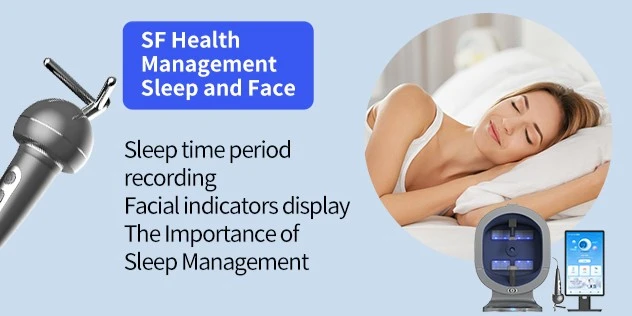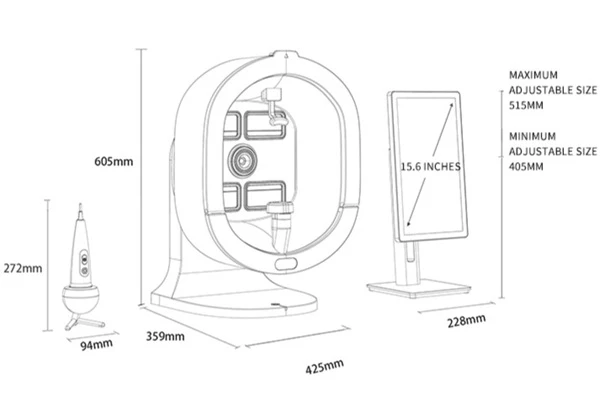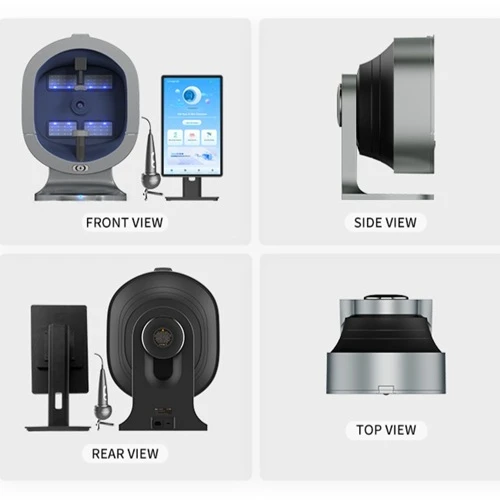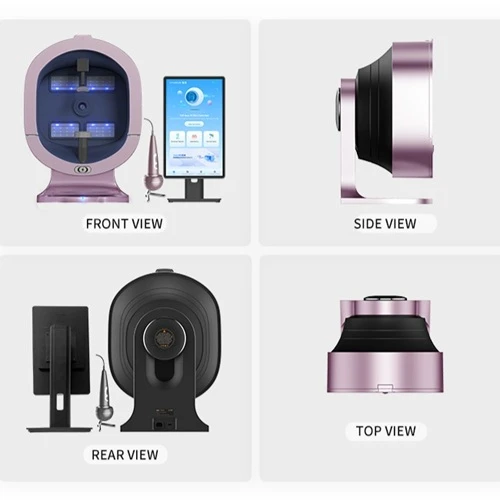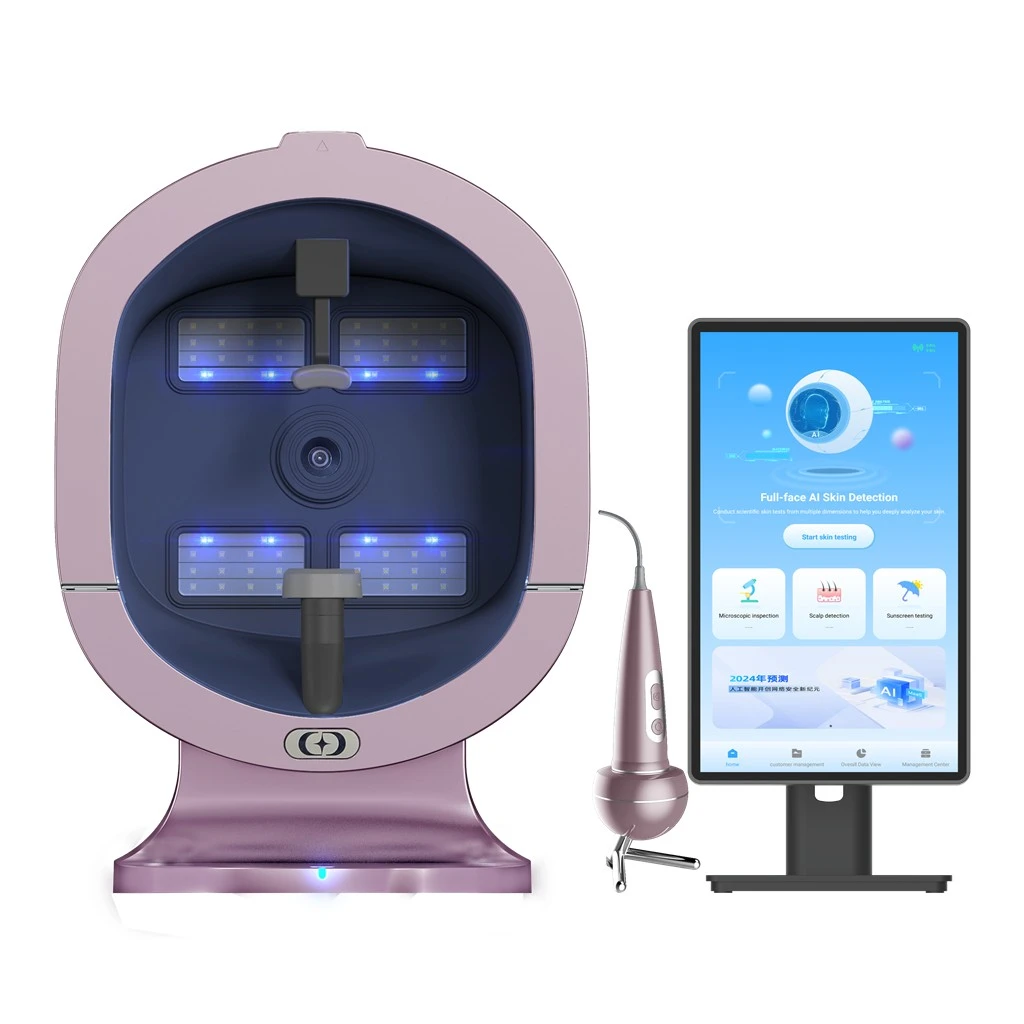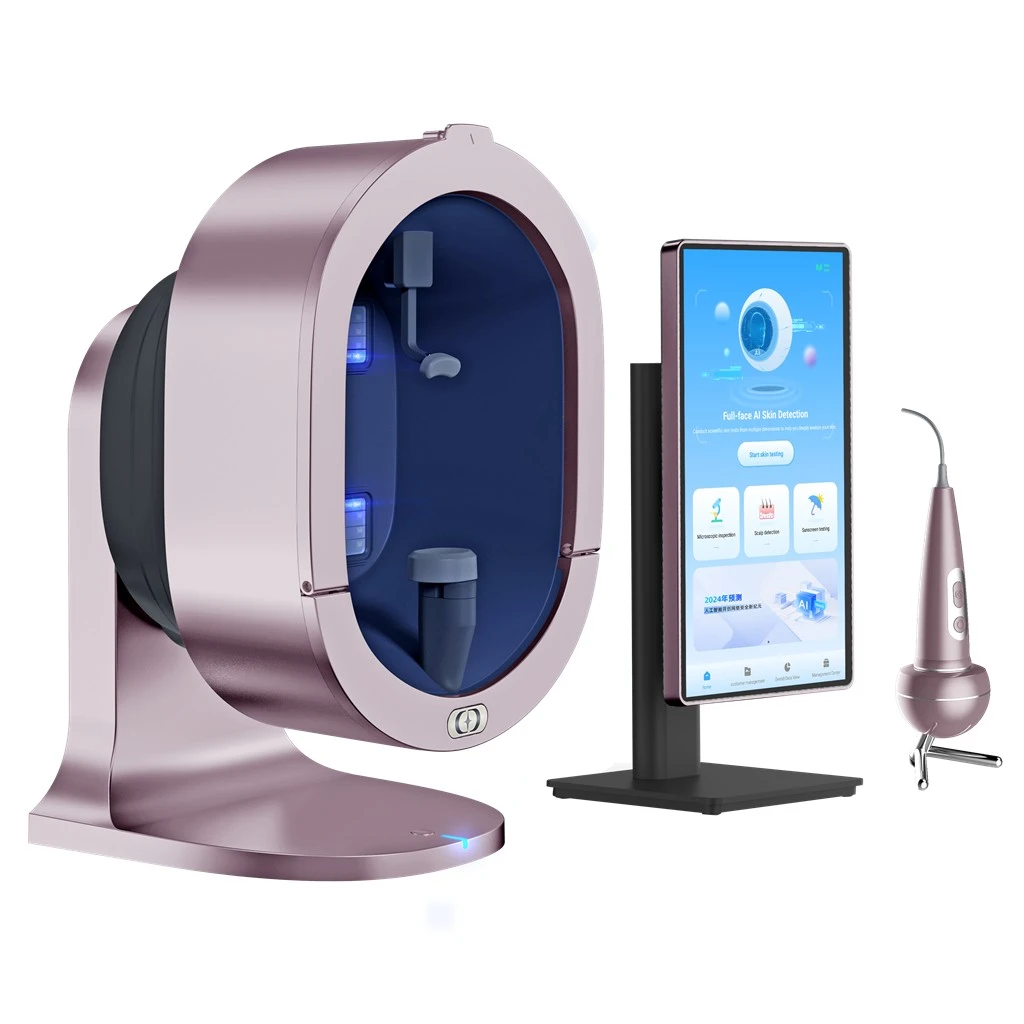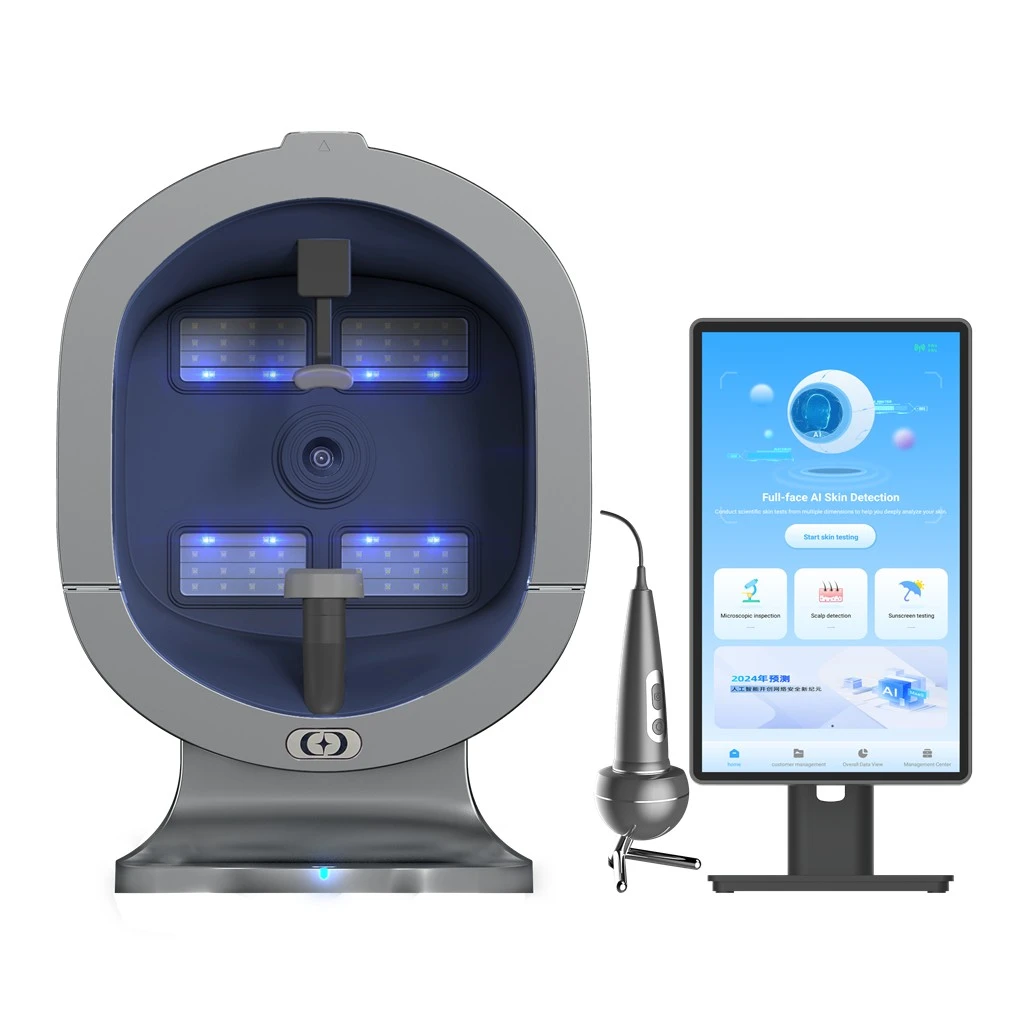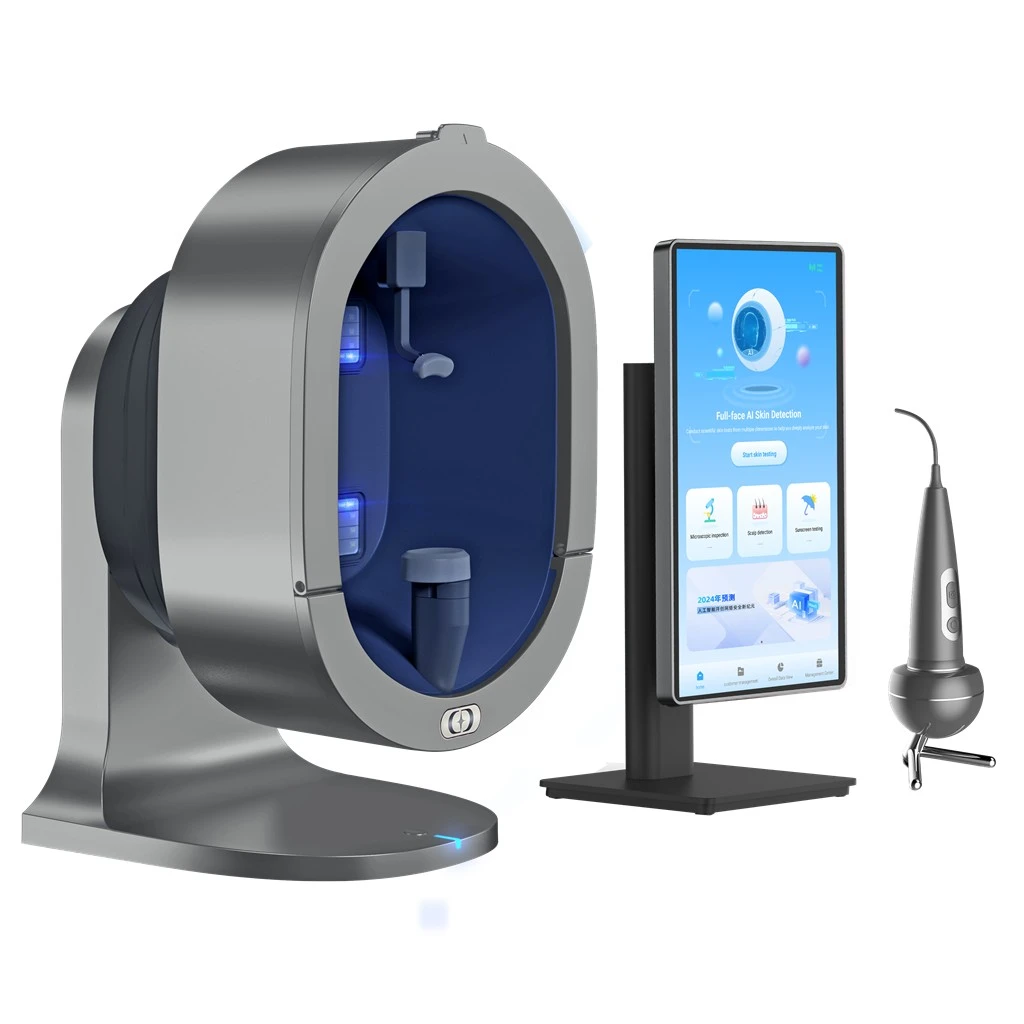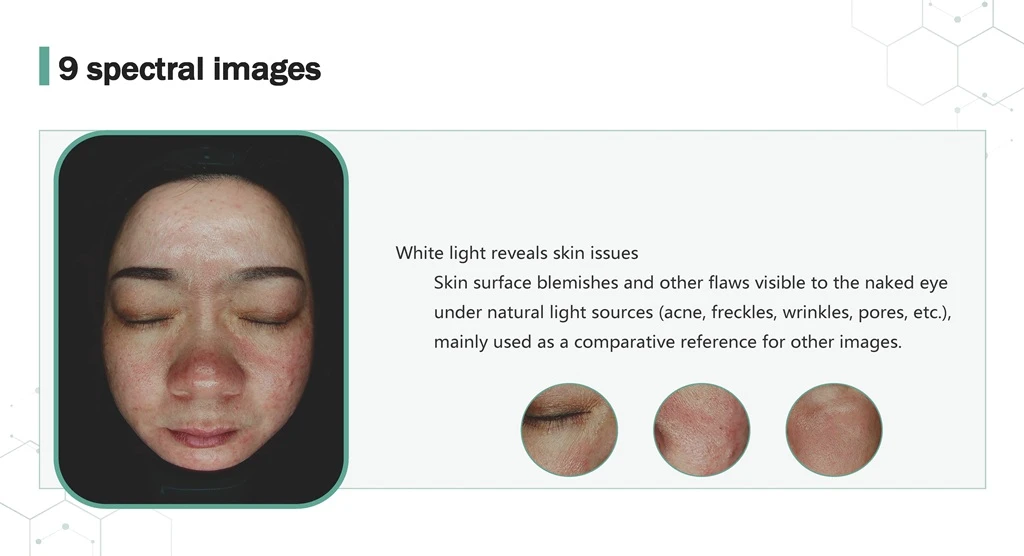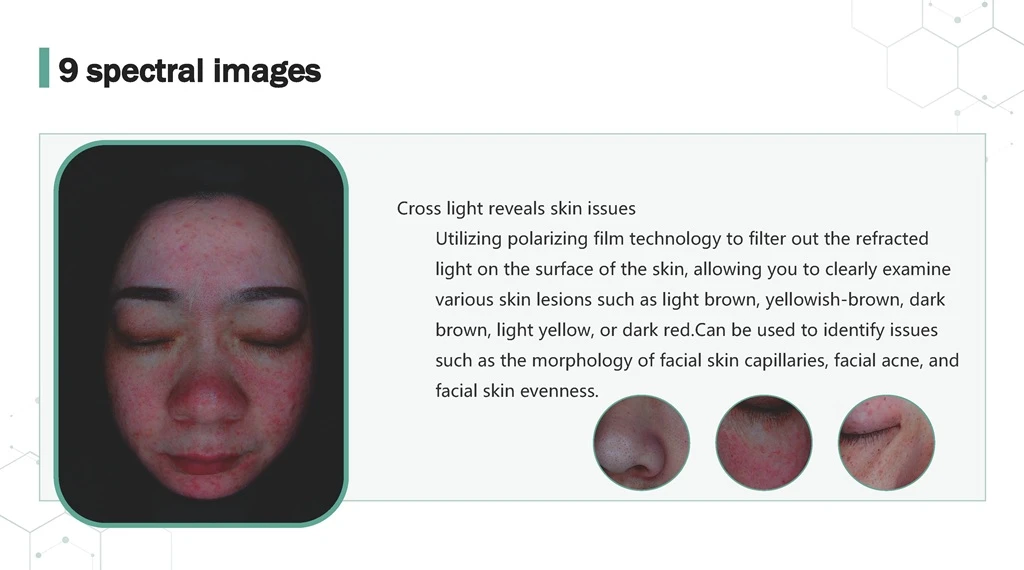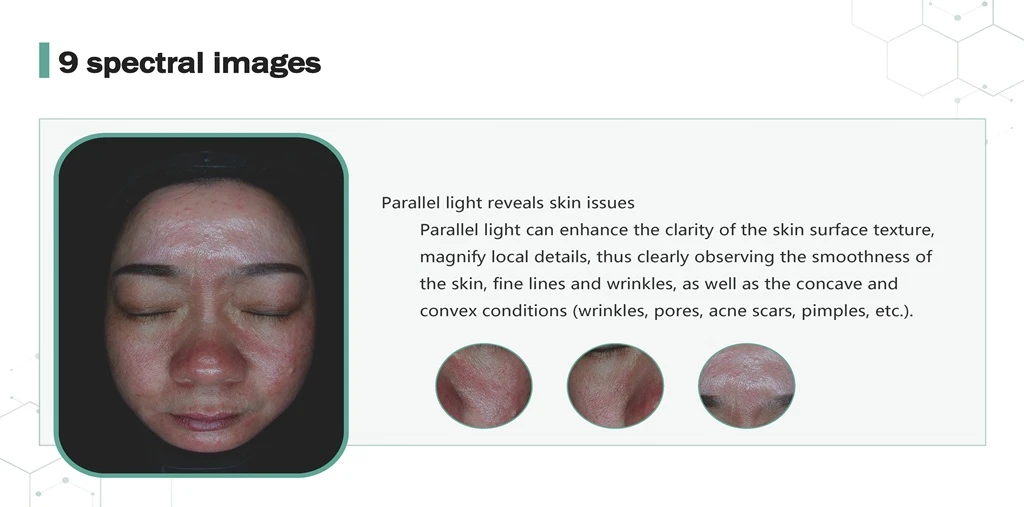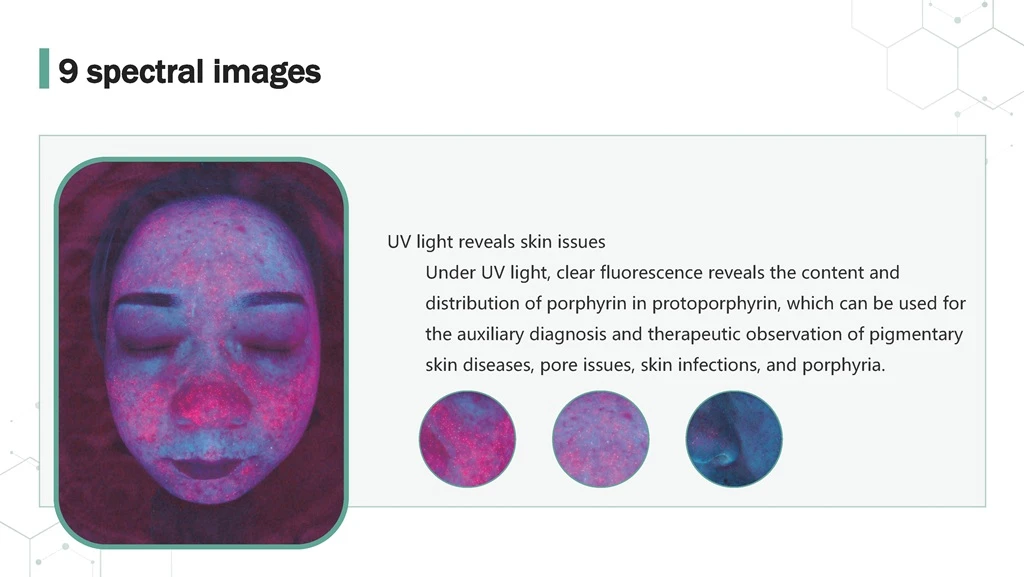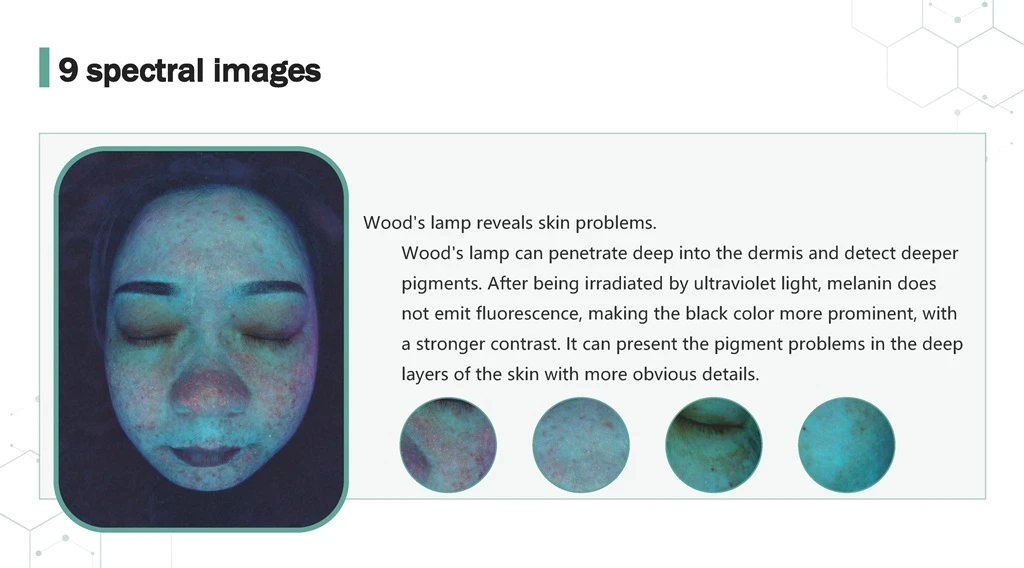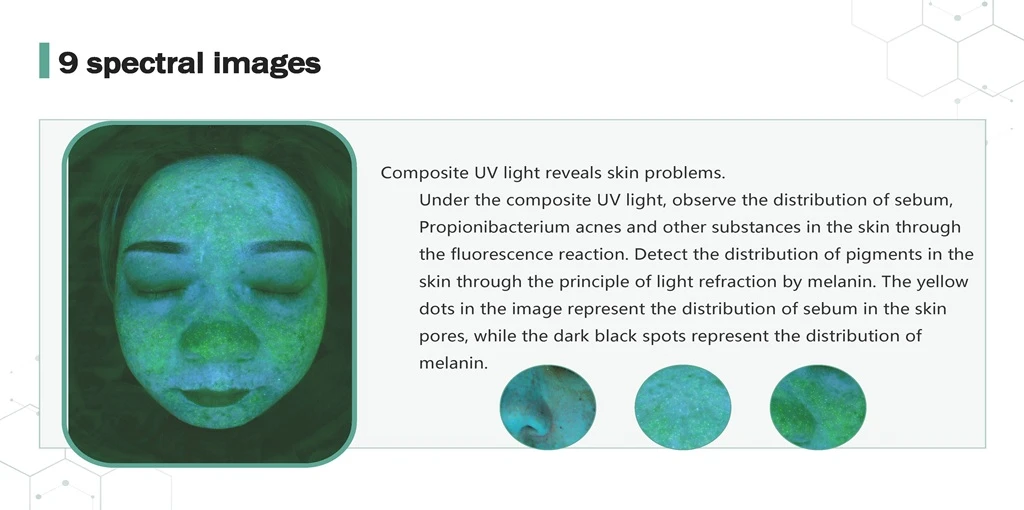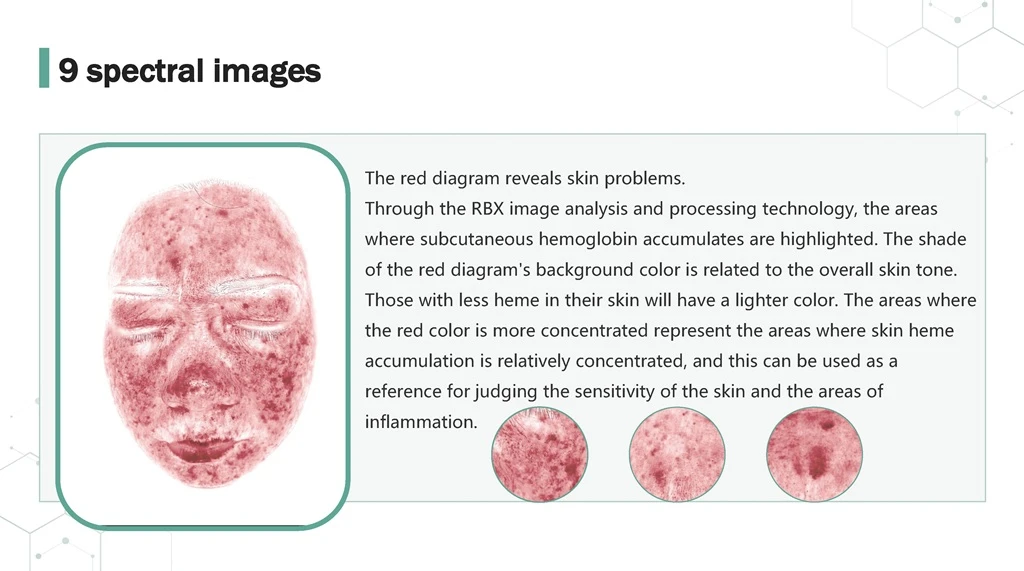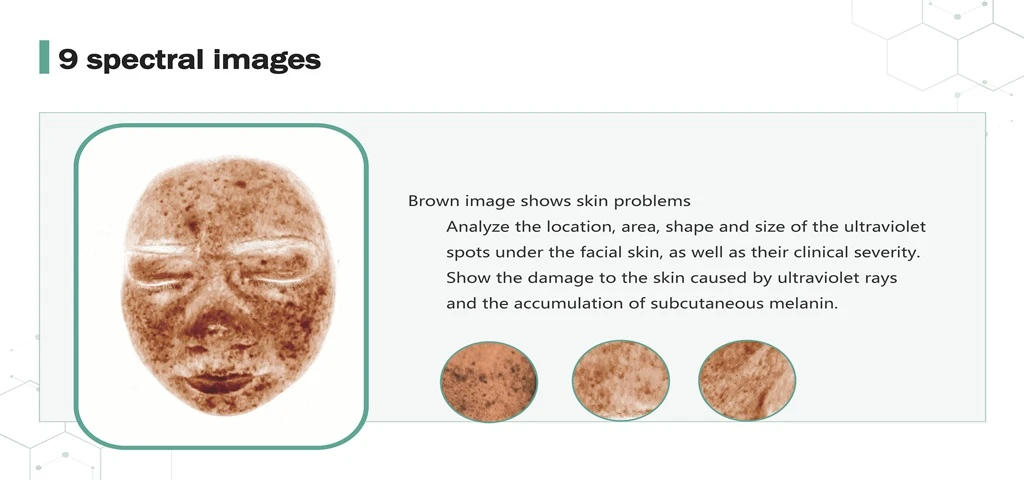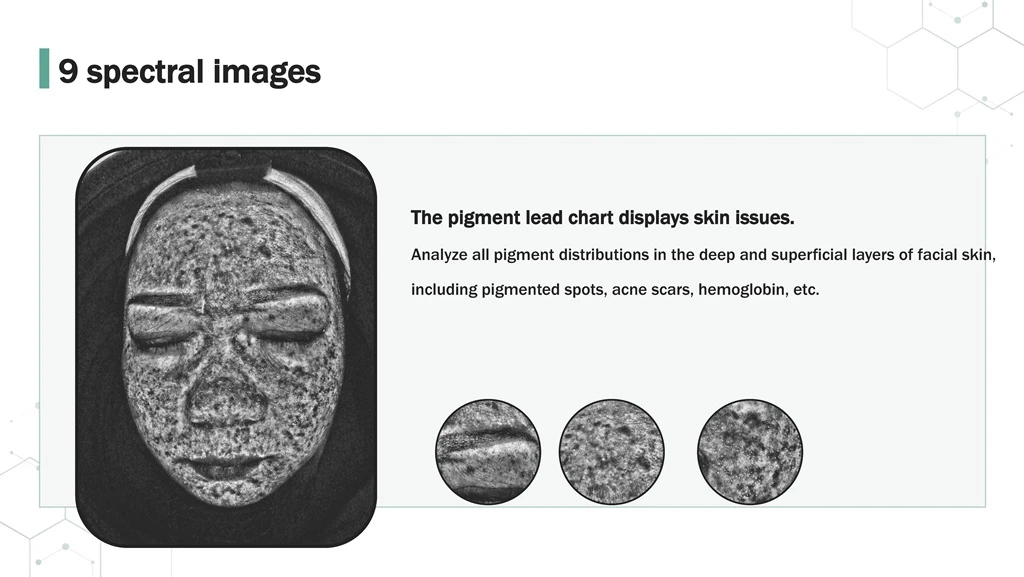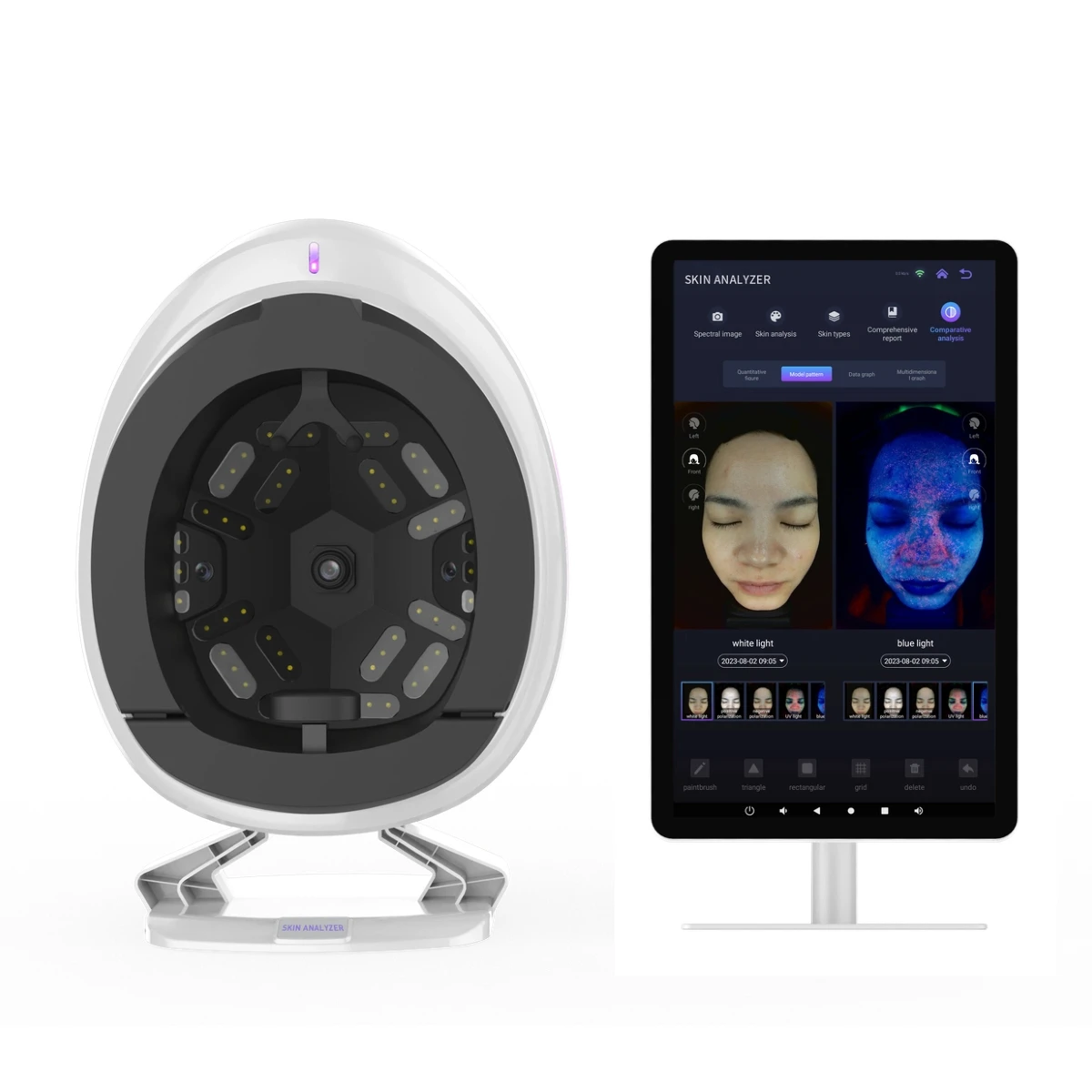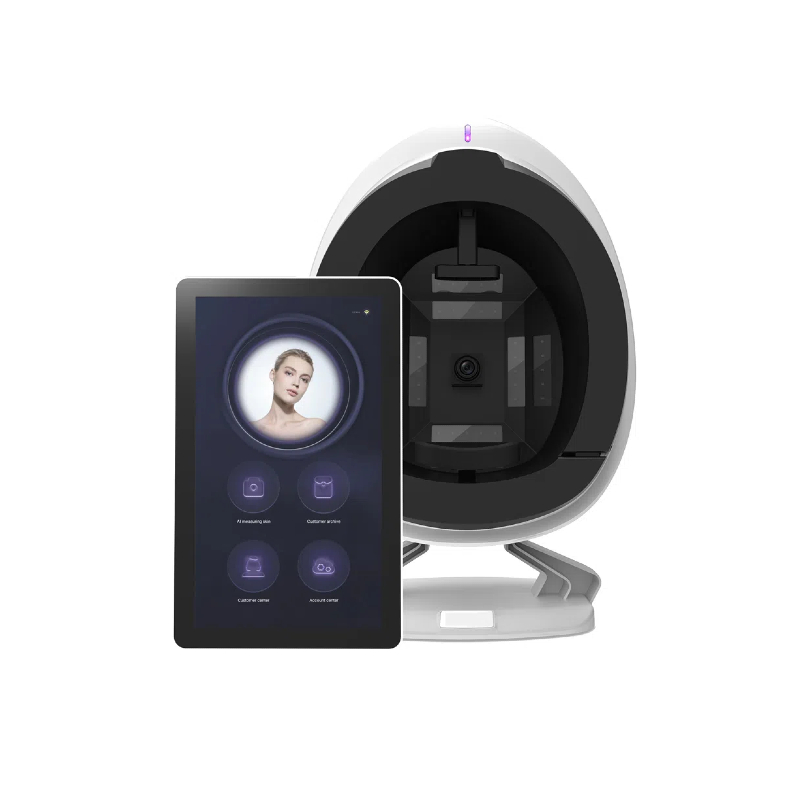1. Skin Issue Detection Indicators
The AI Skin Analyzer uses specialized diagnostic indicators to detect skin issues. By monitoring four skin indicators—acne, sensitivity, pigmentation, and aging—it provides comprehensive information on the skin’s surface and underlying conditions.
Among them, there are 7 tests for skin acne, 4 tests for sensitive problems, 4 tests for pigmentation, and 4 tests for aging skin.
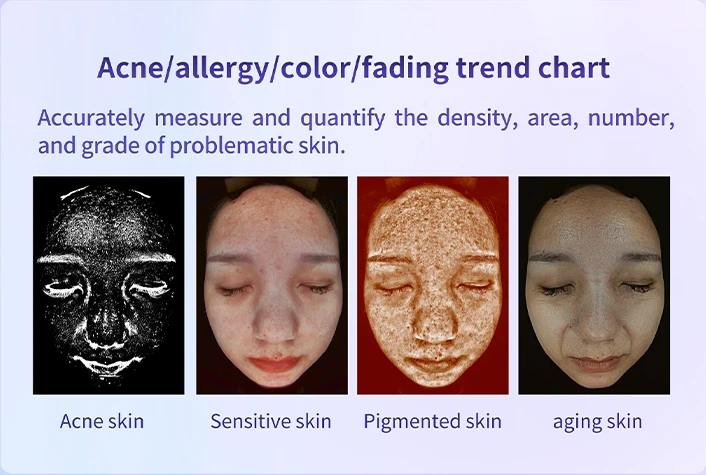
2. Skin Microscopic Examination
Microscopic examinations using a skin analyzer can reveal subtle inflammation within the epidermis, dermal-epidermal junction, and superficial dermis, as well as pigmentation abnormalities (such as early melasma), dilated capillaries, or clogged hair follicles (precursors of acne), invisible to the naked eye, enabling early intervention.
The bacteria and oils found within skin pores and on the skin’s surface are so tiny they are barely visible to the naked eye, but they can be clearly seen using microscopic examination equipment. Skin spots, often accompanied by inflammation and hemoglobin accumulation, can also only be observed using microscopic examination tools.
The facial flora is densely populated and displays small fluorescent spots, making partial improvements after treatment difficult to detect. However, microscopic examinations clearly show reductions in each area, creating a clear contrast.
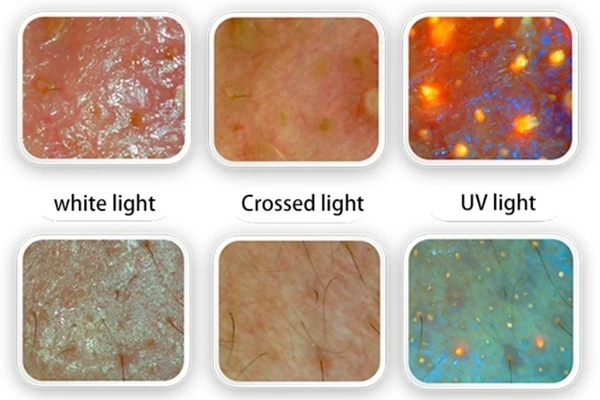
3. Scalp Detection Function
The scalp function of the skin analyzer can detect invisible hair follicle atrophy (a precursor to hair loss), subtle inflammation (scalp sensitivity or signs of folliculitis), and a damaged scalp barrier (such as a thin stratum corneum or a disrupted sebum barrier).
It can also detect Malassezia overgrowth (a cause of dandruff and seborrheic dermatitis) or bacterial infections (such as pustules caused by Staphylococcus aureus).
It can also monitor scalp oil production (differentiating between oily and dry scalps), pH imbalances (causing itching or flaking), and impaired microcirculation around hair follicles (impairing hair growth).

4. Sunscreen Detection Function
The plethora of sunscreens on the market can make it difficult to choose. Beyond the SPF displayed on a product, we’re even more concerned with how long a sunscreen stays on our face and how well it adheres to our skin. Even the best sunscreen won’t provide effective protection if it quickly wears off.
The new version of the Skin Analyzer has added a sunscreen effectiveness test function, which can help you determine the longevity of sunscreen on your face and can also serve as a tool for verifying product effectiveness.
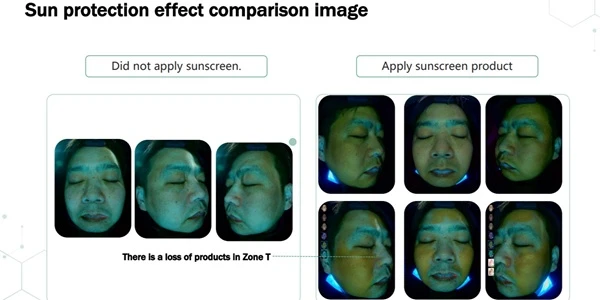
5. Weight & Facial Health
Fluctuations in body fat can affect the body’s metabolic function. Excessive body fat can lead to excessive oil secretion on the face, which can lead to bacterial growth, acne, and facial contours. Low body fat can lead to dryness, loss of radiance, and loss of volume. Furthermore, excessive or low body weight can also affect overall health. Therefore, proper weight management is not only beneficial for overall health but also improves facial aesthetics.
Skin analyzers have added weight management capabilities to maintain healthy beauty, providing a scientific management solution for every beauty enthusiast.
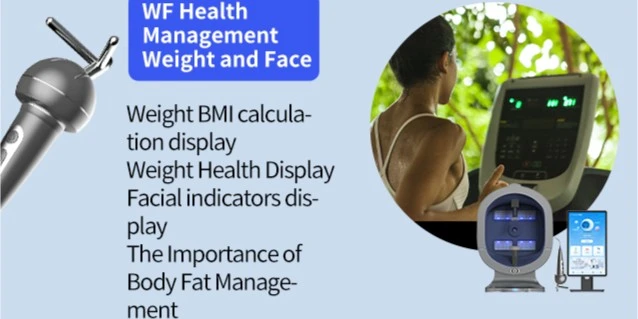
6. Sleep & Facial Health Management
Sleep is one of the body’s most important physiological repair mechanisms, profoundly impacting overall health and skin condition. Lack of sleep hinders the nighttime repair of collagen and increases cortisol levels, leading to increased sebum production and acne. It also dilates blood circulation around the eyes, causing blood congestion and dark circles.
Skin analyzers now have a sleep monitoring function. Improving sleep quality can also benefit facial skin and help people maintain healthy sleep habits.
